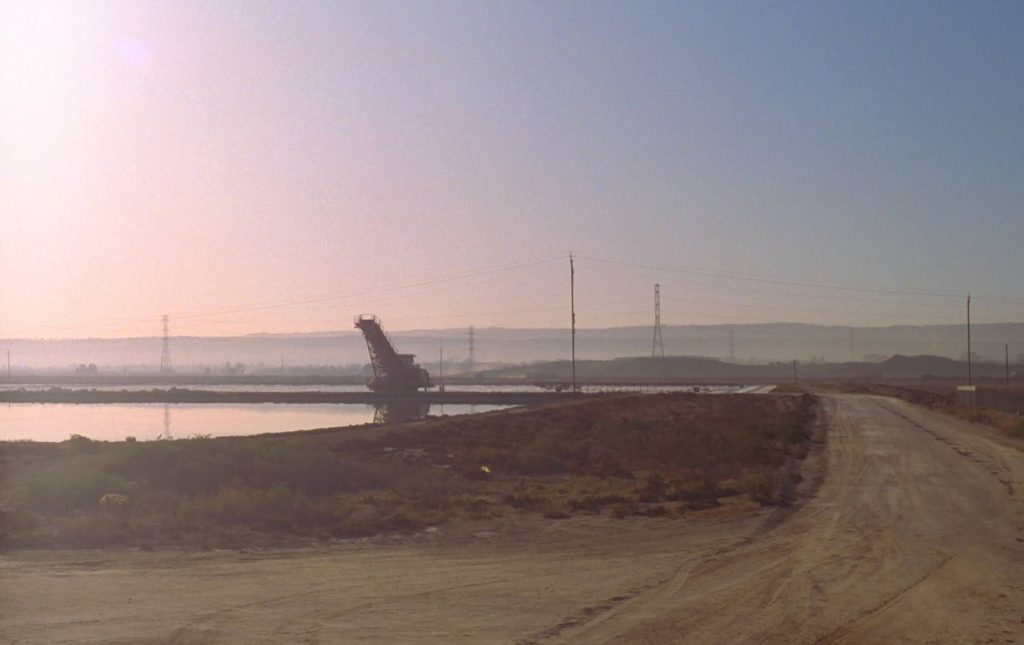
As the sun rises across the Adelaide Plains the salt stacker is moved into place to start the day’s salt harvest at the Dry Creek saltfield.
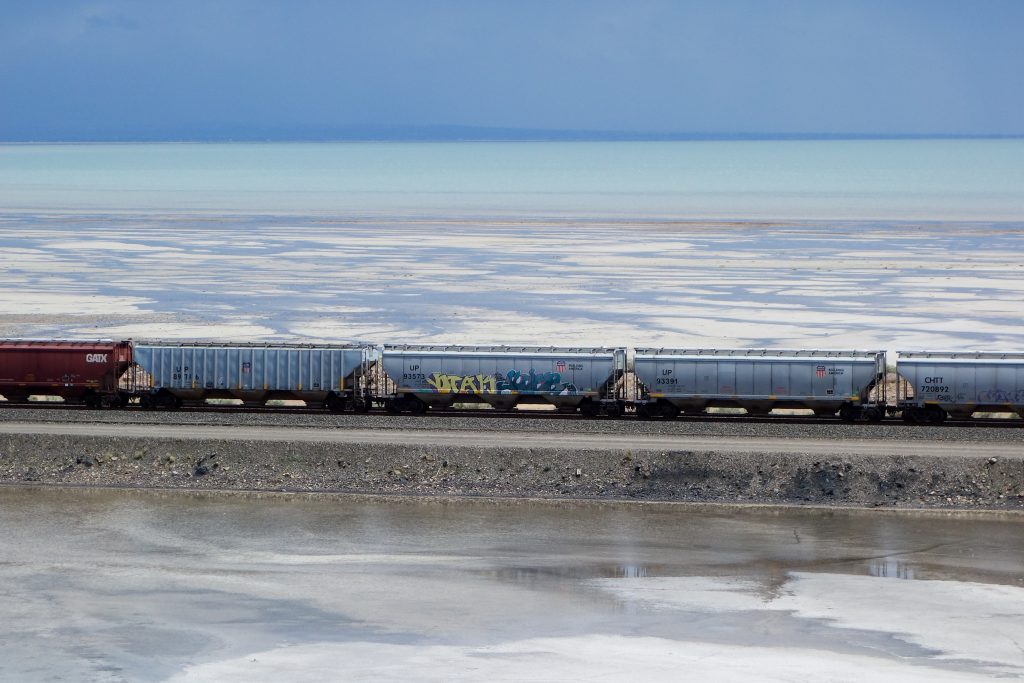
A railway car tagged as “Utah Juice” travels across the The Union Pacific Railroad Causeway that bisects Great Salt Lake into two distinct bodies of water.

A child’s Captain America whirlybird toy is left behind at the Spiral Jetty, Great Salt Lake, Utah.
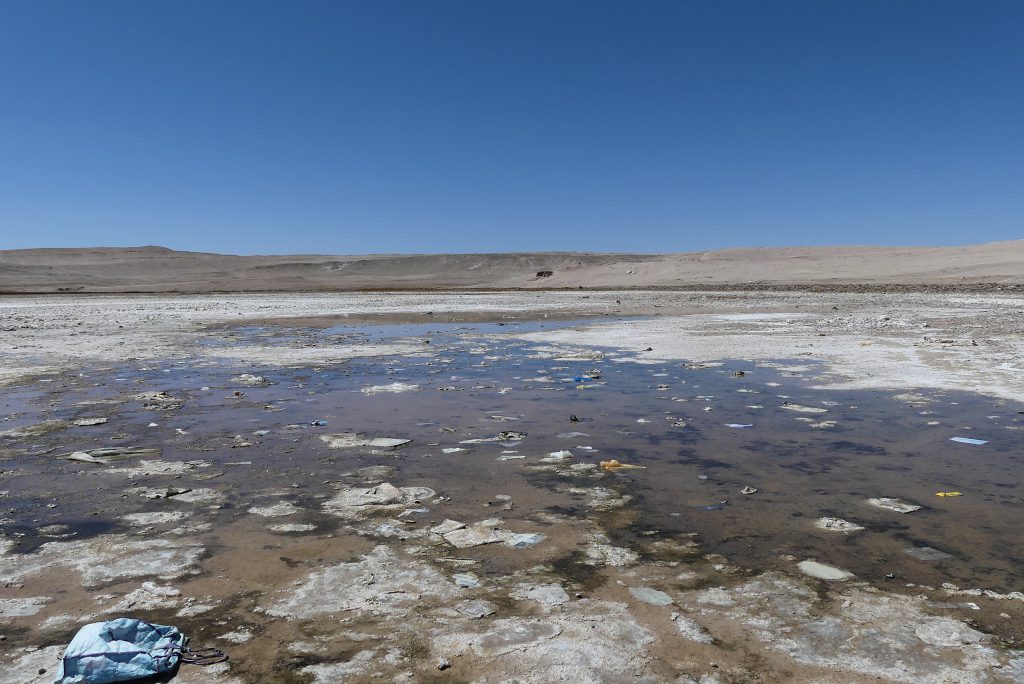
Salar Rudolph, near Calama (Chile), one of the few water bodies in the arid landscape of the Atacama desert. Once an oasis, now it is full of rubbish and plastic waste, reflecting the harsh reality of human impact.

A man walks the exposed lakebed, a stark testament to the sea’s ongoing recession. The person’s presence provides scale, emphasizing the vast expanse of newly revealed terrain. As he walks, he examine the complex tapestry of exposed mud and gypsum crusts. These features tell a geological story of the lake’s changing chemistry and water levels. Looming in the background, a thunderstorm rolls in its dark clouds a dramatic counterpoint to the arid landscape. This approaching storm highlights the area’s unpredictable weather patterns and the crucial, yet rare, role precipitation plays in the Salton Sea’s delicate water balance. The distant mountains, visible through the storm’s haze, frame the scene and reveal the unique topography of the region. These surrounding elevations create a natural wind tunnel effect, significantly influencing the local meteorology. This geographical feature plays a crucial role in shaping the lake’s wind patterns, which in turn affect its circulation and wave dynamics.
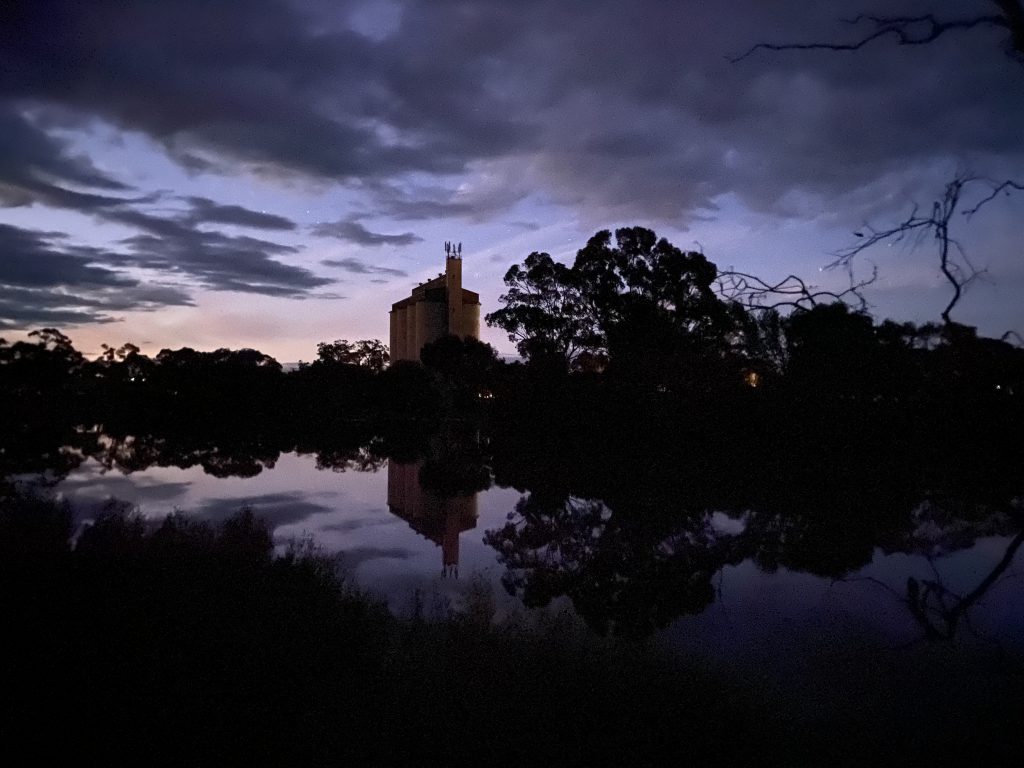
Saltlakes find their way into existence both in spite of and because of human activity. Lake Indawarra (South Australia) was originally a gravel pit, dug in the 1800s as a source of ballast for the adjacent railway line. It quickly filled with water, so was used as a water source for the steam trains. Over time, the water became more saline and steam was converted to diesel, leaving this little lake abandoned and filled with rubbish, until it was cleaned out to form a recreational lake. It is now a refugia for a vast array of mesosaline life, hosting species long lost from the drained landscape.
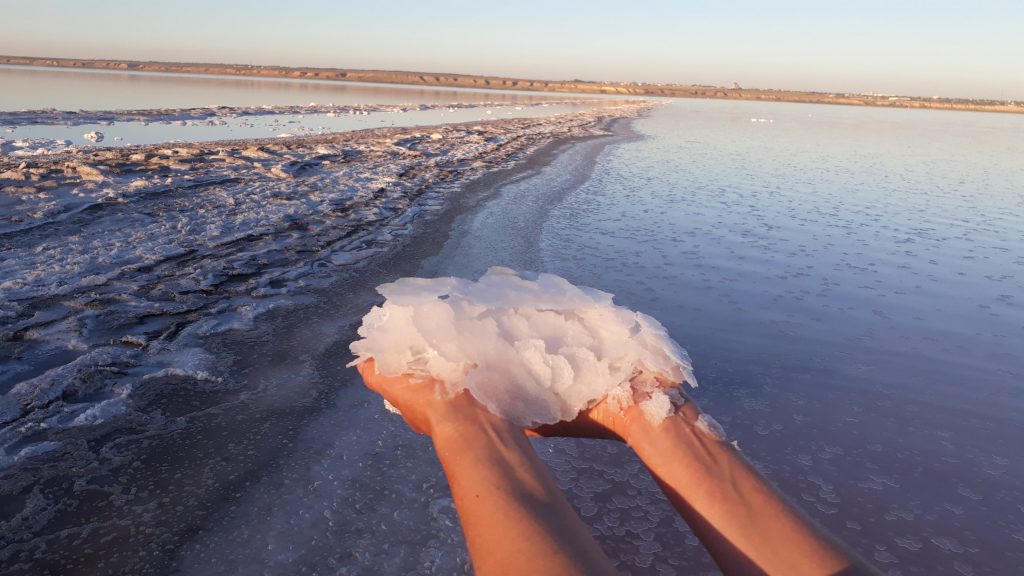
Kuyalnik Lake, Ukraine – once a thriving saline ecosystem, this lake is now drying up, leaving behind stunning deposits of salt flakes. In the foreground, nature’s transformation is evident as the water crystallizes into delicate salty fragments, while the old dam in the distance stands as a silent witness to the lake’s slow disappearance.
